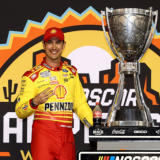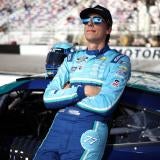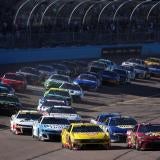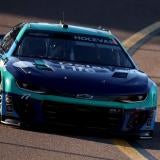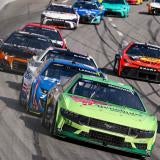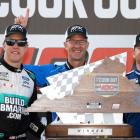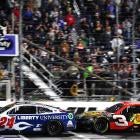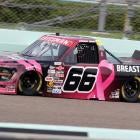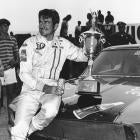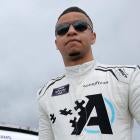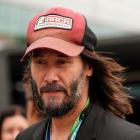
In April 2022, RFK Racing entered Richmond Raceway running on empty. New co-owner Brad Keselowski had suffered through a 100-point penalty for an illegal tail panel, knocking him out of playoff contention, while Chris Buescher posted just one top-10 finish outside of the season-opening Daytona 500.
Just 15 months later, with Buescher sitting in victory lane after Sunday's NASCAR Cup Series Cook Out 400 at Richmond Raceway, has this team gone from one of Ford's worst to its best hope for the future?
"We're positioning themselves to get there one day," Keselowski said. "And I'm proud of that."
RFK is a bright spot within a Ford NASCAR program that's posted just three wins in the season's first 22 races. Keselowski's former organization, Team Penske, owns the other two: Joey Logano's pack racing win at Atlanta and Ryan Blaney's surprising victory in May's Coca-Cola 600.
But Penske also has a third car, driven by Austin Cindric, who doesn't even have a top-five finish this year. Compare that to the synergy of a RFK Racing program where both Keselowski and Buescher are equally strong, sitting within five points of each other in the Cup standings.
Both cars remained a steady hand out front during a Richmond race run in sweltering heat: temperatures inside the cars rose to well over 130 degrees. Three caution flags limited chances for drivers to make adjustments, turning this race into an old-school battle of long-range handling and tire management.
"That part to me is fun," Keselowski explained. "That's the challenge. It feels like there's a game of chess going on and you're trying to play it as smart as you can, trying to have the feedback loop with the team so they don't over-adjust."
The race appeared to play into Keselowski's hands, charging from 13th to the lead by Lap 182, until he slid a little too hard into the No. 6 pit box on a green-flag stop. That tilted the advantage over to teammate Buescher who built a comfy, four-second edge over much of the final stage, surviving a late caution for Daniel Suarez's spin that closed the gap.
Combined, the Buescher/Keselowski duo led 190 of 400 laps to assert themselves as the day's most dominant team. RFK Racing now has two wins since Keselowski bought into the program, matching the number this organization had combined from 2015-21.
"RFK has made some massive leaps," Buescher said. "We've been in a good spot the last 18 months."
Whether they take the next step during their first playoff run remains to be seen. But with Ford's other teams, like Penske and Stewart-Haas Racing, weighed down by underperforming cars, they may be the Blue Oval brand's best hope going forward.
Traffic Report
Green: Ryan Preece. What a seven days for Preece, who rebounded from a bizarre post-race attack on Corey LaJoie at Pocono Raceway to post a season-best fifth-place finish. It's the best run for SHR's No. 41 car in three years, when Cole Custer scored an upset win at the now-defunct Kentucky Speedway in July 2020.
Yellow: 23XI Racing. Michael Jordan's team flashed some speed, posting the first 1-2 finish for the organization in team history after Stage 1. Bubba Wallace used those bonuses to his advantage, gaining 27 points on the playoff bubble to move to +54 on the cutline with a 12th-place finish. But once again, self-induced mistakes on pit stops, including a penalty (Tyler Reddick had a commitment line violation) left the team with nothing to show for a whopping 161 laps led on the afternoon.
Red: Daniel Suarez. A late spin was the cherry on top of an awful day for Trackhouse Racing's No. 99 team. Back-to-back incidents have left Suarez 34 points outside of the final playoff spot and will probably leave him on the outside looking in.
Speeding Ticket: Chase Elliott and Alex Bowman. You've got to wonder why Hendrick Motorsports, with two teams coasting to easy playoff bids, hasn't done more to ensure its 9 and 48 teams make the field. Making the postseason was well within range despite injuries to both drivers, especially considering the speed of teammates William Byron and Kyle Larson.
Instead? These drivers have combined for just 46 laps led since returning to the driver's seat. They posted a combined -12 position differential at Richmond, one of their better tracks, and will face the final four races in win-or-else desperation mode.
Oops!
This space is empty for a reason: no major contact at Richmond other than Suarez late in the race (and Kyle Larson making Hamlin's day difficult after contact between them settled the race at Pocono).
Several drivers made a point after Richmond to say how much they liked the old-school feel of the race. Long runs left drivers battling handling woes while different crew chief strategies on when to pit left things somewhat unpredictable.
Here's the problem with that: there was more rubbing on the 2.5-mile triangular-shaped Pocono track last week then on one of the sport's most iconic 0.75-mile short tracks. Rubbing fenders is what those places are known for, yet Richmond has been reduced to little more than a long, albeit challenging Sunday drive with more than enough room for drivers to race without incident.
It's been that way for a while now, evidenced by the eyebrow-raising number of empty seats just one week after Pocono's first sellout since 2010. NASCAR is faced with a difficult choice: invest in a radical change to the tire and handling package, revving up the excitement, or remove one of Richmond's two dates from the schedule going forward.


